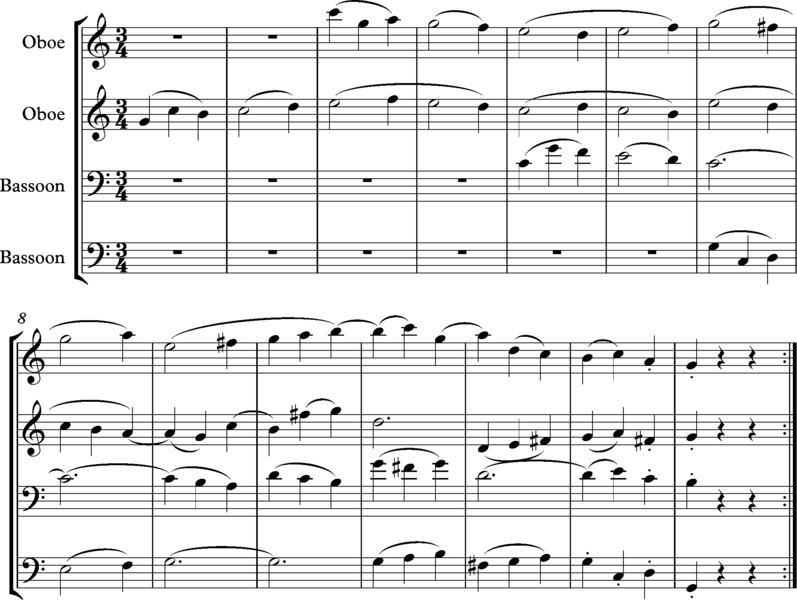
The trio section of Mozart’s Serenade for Wind Octet in C, K. 388 (audible here at 14:30), is a double mirror canon: The second oboe introduces a line and after two bars the first oboe joins it playing the same line “upside down”; then the first bassoon starts its own line and the second bassoon enters playing that upside down. Now all four parts are exploring the same theme, but they’re offset by two bars apiece and two of them are inverted.
Pianist Erik Smith called this “the visual image of two swans reflected in the still water,” “a perfect example of Mozart’s use of academic means, canon, inverted canon and mirror canon, to a purely musical and emotional end.”
